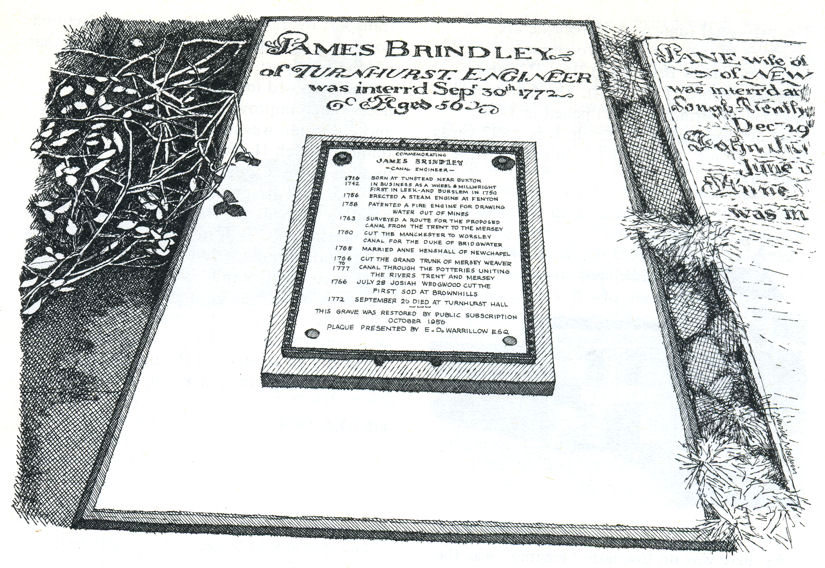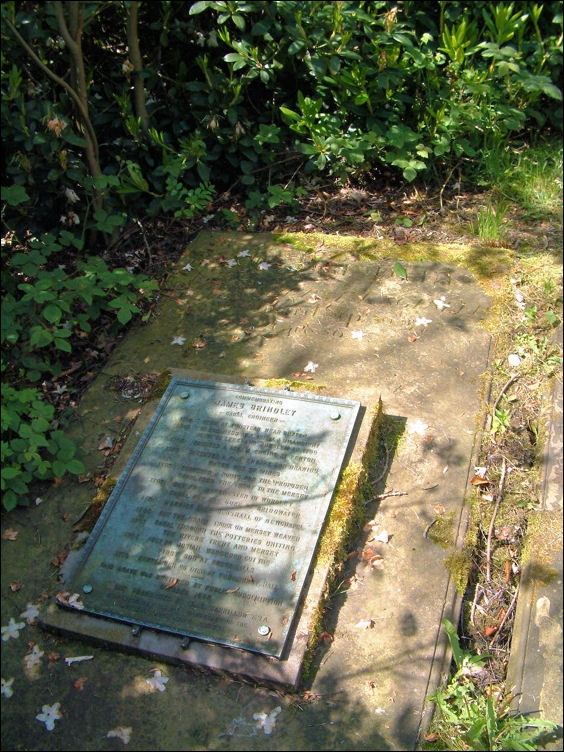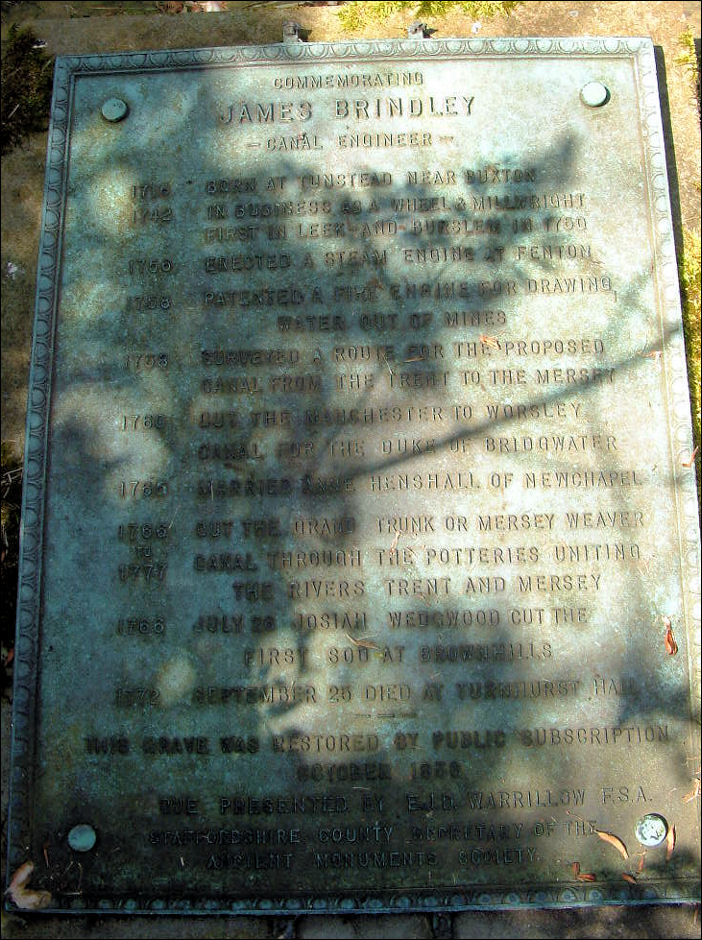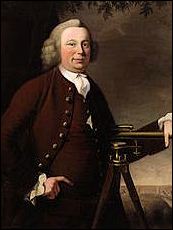|
|
|
![]() back to "The Grand Tour" index
back to "The Grand Tour" index
Neville Malkin's "Grand Tour" of the Potteries
buildings of
Tunstall and the surrounding area
![]()
![]()
![]()
next: Harecastle Tunnel
previous: St. James's
Church, Newchapel
contents: index of buildings of Tunstall and surrounding area
|
No 36 - James Brindley's Grave
© Staffordshire Past Track |

James Brindley's Grave, Newchapel
pen drawing by Neville Malkin -
April 1976

James Brindley's Grave and later plaque
photo: May 2009
|
"Beneath
this plain tombstone in Newchapel Cemetery lies the remains of that
brilliant engineer and canal builder, James Brindley. He was born in
1716 at Tunsted in the High Peak, near Buxton, the eldest son of a
farmer, who, in the 1720s, moved to Lowe Hill, near Leek. Young James' education was a straightforward one, consisting of the three R's. At about the age of 17 he was apprenticed to Abraham Bennett, a millwright from near Macclesfield. At a very early stage of his training it is said that he inserted all the spokes of a cartwheel the wrong way round! But, with more experience, he became an expert workman, developing a natural tendency for applying water power for mechanical purposes. After his apprenticeship he continued as a journeyman and two years later, about 1741, started as a millwright on his own, first at Leek and then, in 1750, at Burslem. He gained a reputation for being an ingenious mechanic and was nicknamed "The Schemer." His fame spread far and wide, and from 1752 onwards he was engaged on numerous projects throughout Britain. On one occasion in 1760, while working for the Duke of Bridgewater, he proposed to carry the Worsley-Manchester Canal over the River Irwell by means of a 39ft high aqueduct; an eminent engineer, who had been consulted about the project, ridiculed the attempt, and retorted: "I have often heard of castles in the air, but never before was shown where any of them was to be erected." Brindley was not discouraged, and in 10 months the aqueduct was completed. His involvement prevented him from indulging in any kind of amusement, and on one occasion, when prevailed upon by friends to attend a London theatre, found his mind so disturbed by the play that he declared he would not on any account ever go to see another. In those pioneering days there were no books to consult; when he found difficulty resolving his problems he would retire to his bed for one, two, or even three days, until he had found the answer. His complete devotion and constant attention to work eventually brought on a hectic fever, which continued with little interruption for some years and was finally responsible for his death at Turnhurst Hall, on September 27th, 1772, at the age of 56. In 1765 he had married Anne Henshall, a Newchapel girl, by whom he had two daughters-Anne, who died unmarried, on her way home from Sydney, in 1838; and Susannah, who married a Bristol merchant."
|


- click for index page on Brindley -
![]()
![]()
![]()
next: Harecastle Tunnel
previous: St. James's
Church, Newchapel
contents: index of buildings of Tunstall and surrounding area
back to "The Grand Tour" index